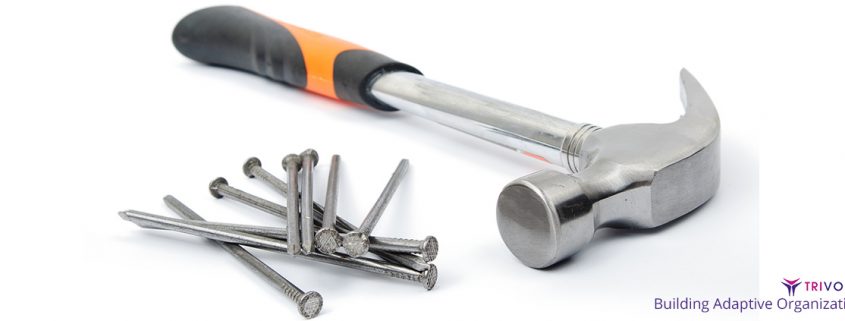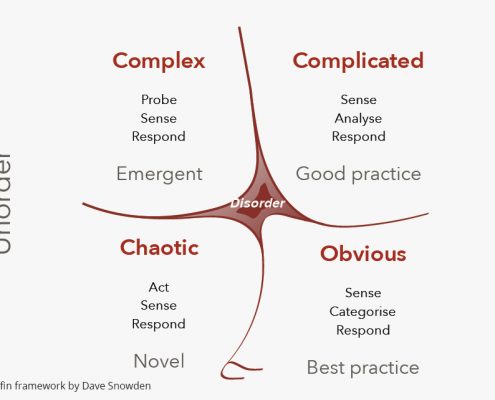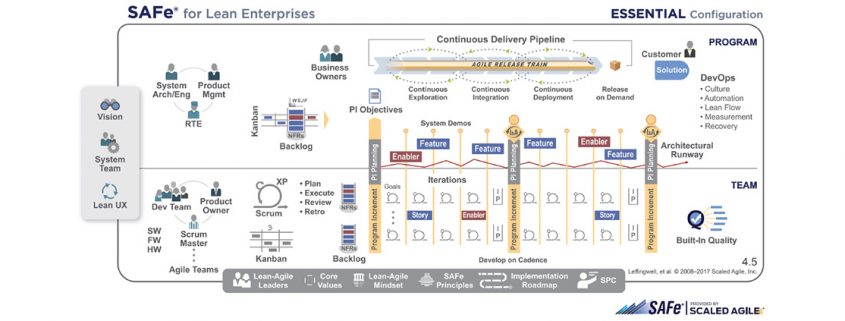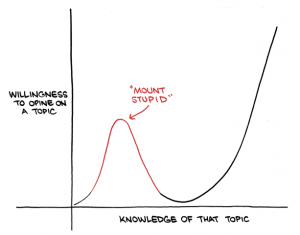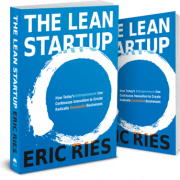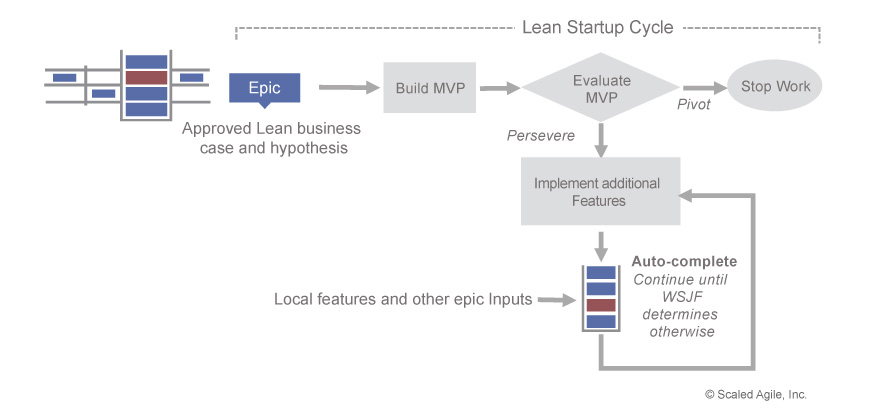If your only tool is a hammer…
The environment of organizations changes at an increasingly fast pace. Complexity and uncertainty are on the rise. But the set of tools that management uses to manage and design their organizations, is changing very slowly. There is an increasing mismatch between the applicability of tools used and the problem domains of modern organizations. How can we assess which domain we’re in and if we are using the appropriate tools?
There’s no denial that organizations operate in a world of fast change, uncertainty, and constant flux. Windows of opportunity open and close faster and faster. Maintaining a sustainable competitive advantage is pretty hard these days. It also seems apparent that most organizations are ill equipped for dealing with rapid change. One indicator is the life expectancy of organizations. It seems to be shrinking at an alarming rate. Professor Richard Foster of Yale University led a Innosight study that shows that a 61-year tenure for the average firm in the S&P 500 index in 1958 narrowed to 25 years in 1980, to only 18 years now. Even more, at this rate by 2027, over 75% of the S&P 500 will be companies you have never heard of. That’s pretty alarming, isn’t it?
There’s obviously work to do for the management of any organization. Complacency is your biggest enemy in this world, it is a one-way street to irrelevance. The business graveyard is full of companies that either reacted too slow or not at all to change. We don’t pretend to have a silver bullet that transforms any organization into a resilient adaptive organization that can deal with anything. But a first step is to be able to asses which problem domain were in and if the tools we use match the domain. Unfortunately, many organizations stick to tools they know like hierarchy, centralization, focus on efficiency, strict rules and processes, linear planning, etc. There’s nothing wrong with these tools per se, it is just that they were designed for organizations that existed about 100 years ago. Many management tools are, more or less, still the legacy of Frederick Taylor’s Scientific Management and Henri Fayol’s functions and principles of management. The world has changed dramatically since then. In the Western economies there aren’t that many industries anymore where these tools work well.
Every organization, department, team, or process is situated in a specific problem domain, each with its own appropriate tools. So how can we tell which one we’re in. A very useful tool here is a sense-making framework called Cynefin. The Cynefin framework has four main domains, and a fifth one called disorder, that each describe the context in terms of the relationship between cause and effect. The four main domains are called obvious (I still prefer the old term ‘simple’), complicated, complex, and chaotic. The disorder domain is used in case it is not clear in which domain we are.
For a detailed description of the Cynefin framework, you can read the excellent Harvard Business Review article by the framework’s founder Dave Snowden. For the purpose of this article we keep the explanation short: In the Obvious domain, we can easily categorize the problem we face and pick the appropriate checklist or process description to solve it. Because the environment here is pretty stable and predictable we can focus on optimizing best practice processes. A simple loan approval process is a good example.
In the Complicated domain things are not as simple and predictable. We need experts to analyze the situation before we can respond. Most of the time there is still a noticeable relationship between cause and effect but it can be separated in space and time making it hard to spot. This is reinforced by management structures like silo’s and KPI’s. We make a decision in one silo, let’s say sales, which has an undesirable effect on another silo, let’s say operations. We don’t see the relationship between cause and effect here because it occurs somewhere else (place) and maybe with a delay (time). Our focus on sales, reinforced by a KPI that just measures sales output, causes us to miss the unintended consequences for the operations department.
The Obvious and Complicated domains together are called the ordered domains. Many organizations think they are in the ordered domains, whereas an increasing number or situations in organizations, teams and processes actually fall in the complex domain, which requires a completely different approach. Because in the Complex domain, good or best practices won’t work. The environment is not stable or predictable, we therefore cannot simply repeat what worked in the past. Nor can we plan the future. We can only discover it by experimenting. The relationship between cause and effect might be there but in most cases can only be seen in retrospect. This is counterintuitive for many managers and therefore hard to accept. There is a dominant tendency to wanting to be able to control and predict the future, even in situations where we can’t, and even if we experience time after time that our carefully crafted plans quickly fall apart.
Now take an invoicing process for example. Most organizations sell something, so invoicing is a common process. You might think invoicing is a predictable stable static process that can easily be handled and optimized by an automated process, and therefore falls into the obvious domain. You are right. The danger is that this makes management rely on processes and rules only. It is not the 95% of correct invoices that matter, but the 5% that are incorrect or exceptional. These are the ones that take up most of the time, and are a danger to the organization’s reputation if not handled well. You cannot handle the exceptional cases the same way as you do predictable ones. But most organizations do. If an exception is found, we create another rule for it. If a customer complains about a wrong invoice we adapt the process. Until the next exception. And the next one. Our system slowly becomes hard to understand and maintain, slow to adapt to new situations, and very costly. And we still find ourselves constantly surprised by new exceptions we haven’t covered yet. What makes matters worse, the way we handle customer complaints on wrong invoices suffers from the same problem: Customers Service reps tend to use strict scripts that handle standard situations well. But the frustration of customers comes from the non-standard mistakes in the first place, and the inability of customer service the solve the issue only adds to the frustration.
Sounds familiar? It is a constant source of airtime for television consumer shows: telco’s, energy companies, and insurance companies getting scrutinized for their inability to properly deal with non-standard situations that appear so obvious for the customer and viewer. It is a classic example of using the wrong tool for the wrong domain. Yet these companies never seem to learn. What’s the standard reply of every spokesperson or executive brave enough to appear before the camera, when asked how they are going to prevent these issues in the future? “We will analyze the process and improve it”. Sigh…
And that brings us to the key takeaway of this article: if you don’t know which domain your situation is in, your will probably treat it as the domain of your preference and the one you are used to. And in many cases that turn out to be the wrong one. You will then be using tools that are not wrong per se, but they are inappropriate for the problem at hand. After all, if your only tool is a hammer, then every problem looks like a nail…

